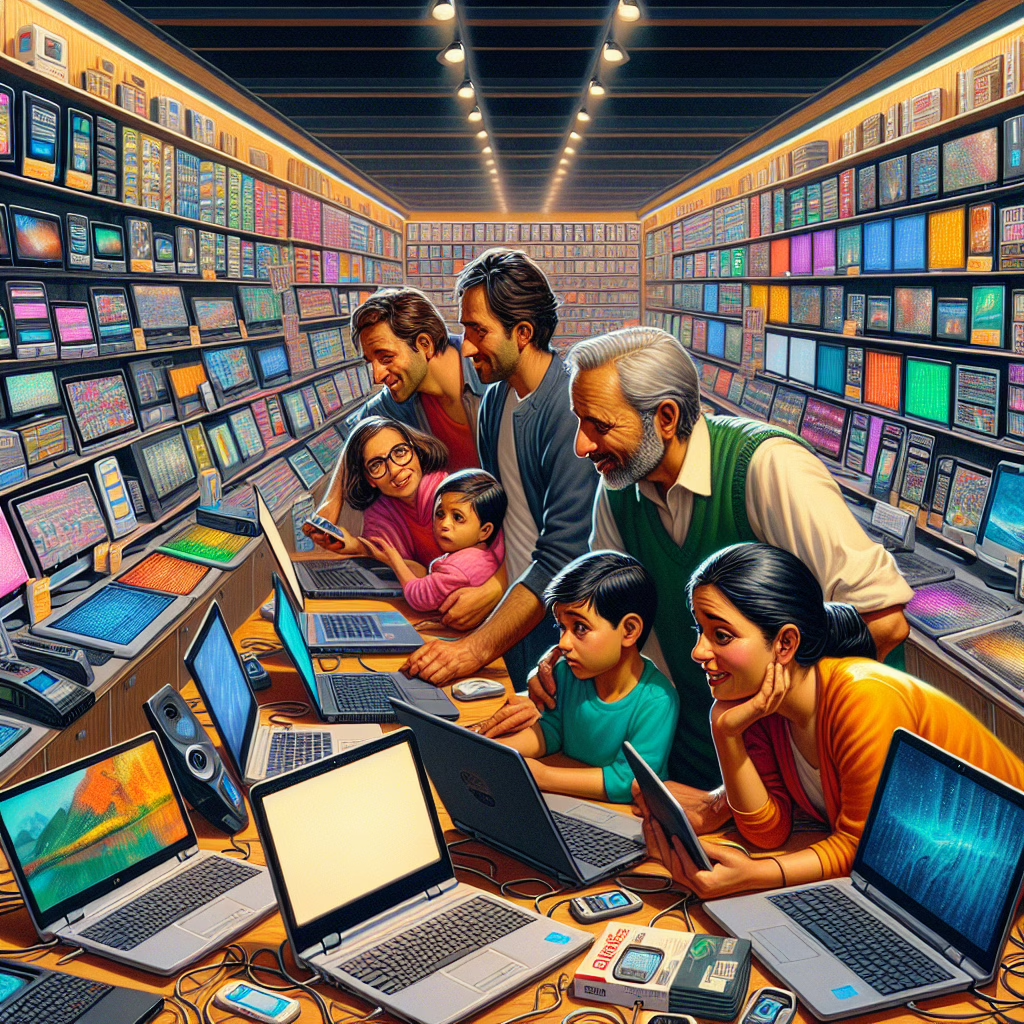In the grand circus of politics, few acts are as entertaining—or perplexing—as the interplay between tariffs and technology. As we dive into the whimsical world of Trump’s tariffs and their impact on the digital divide, one might wonder if we’ve stumbled into a poorly scripted reality show. Spoiler alert: the plot thickens!
The Tariff Tango: A Chaotic Dance
Let’s set the stage: tariffs, those delightful taxes on imports, have made their grand entrance, and they’re here to stay! The aim? To protect American businesses—because who doesn’t love a good underdog story? But instead of a heartwarming tale of triumph, we find ourselves in a tangled web that threatens to widen the digital divide. With every tax hike on tech imports, it feels like we’re just adding more hurdles for those trying to access technology.
Imagine this scenario: a family in rural America wants to buy a new laptop. Thanks to tariffs, that shiny device now costs more than a small yacht. All aboard the struggle bus! Those already grappling with limited internet access find themselves further behind in the race for digital literacy. After all, how can you Google “how to fix your Wi-Fi” when you can’t afford Wi-Fi?
Tariffs: The Unexpected Villain
The narrative takes an unexpected twist as we realize that these tariffs could actually be playing the role of the villain in our tech saga. While some cheer for protectionism as if it were a superhero saving American jobs, many forget about the unintended consequences lurking around the corner. For every job saved, there’s a family who just got priced out of essential technology.
Consider this: when prices rise due to tariffs, consumers often have to make tough choices. Do they splurge on that overpriced laptop or stick with their ancient device that’s held together by duct tape? It’s a tough call! And let’s be honest—who wants to be known as “the person with the slowest computer in town”? Not exactly a badge of honor!
The Digital Divide Grows Wider
As we navigate this tariff-laden landscape, it becomes clear that we’re not just talking about economic policies; we’re discussing access to information and opportunities. The digital divide isn’t just about who has internet; it’s about who can afford the devices to connect to it. In 2025, we should be bridging gaps, not building walls—especially not walls made of overpriced gadgets!
Data shows that lower-income households are disproportionately affected by these policies. When tech products become luxury items due to government-imposed tariffs, the gap between those who can thrive in a digital world and those left behind widens dramatically. It’s like watching a race where some participants are stuck in quicksand while others speed ahead.
A Call for Creative Solutions
So, what can we do about this growing digital divide? For starters, let’s advocate for smarter policies that don’t involve slapping taxes on everything from smartphones to smart fridges. Instead of playing tax roulette with tech imports, why not explore ways to incentivize local manufacturing or reduce costs for consumers? Now there’s a thought!
Additionally, community programs aimed at providing affordable technology access could work wonders. Imagine local libraries transforming into tech hubs where people can borrow devices or get help navigating digital landscapes. Sounds like a win-win, right? Let’s make tech accessible without breaking the bank—or our spirit!
The Humor in Our Digital Dilemma
In this topsy-turvy world of tariffs and technology, humor might just be our saving grace. We can laugh at the absurdity while advocating for change! Let’s poke fun at outdated devices while working towards solutions that ensure everyone has access to modern technology.
As we wrap up this comedic exploration of Trump’s tariffs and their impact on the digital divide, remember that understanding these issues is key to creating real change. The digital landscape should be inclusive—not an exclusive club for those with deep pockets.
Now, dear readers, I invite you to share your thoughts! Have you felt the effects of tariffs on your tech purchases? Or do you have a funny story about trying to navigate today’s digital world? Drop your anecdotes in the comments below!
A huge thank you to Wired for inspiring this article! Your insights help shed light on crucial issues affecting us all.
Conclusion: Navigating a Complex Terrain
As we continue to ponder the ramifications of Trump’s tariffs, it’s vital we also recognize the broader implications for the economy and social equity. The digital divide not only affects individual families but impacts our collective growth as a society.
- Increased Awareness: Awareness around the digital divide can promote community engagement and policy discussions.
- Support Local Initiatives: Encourage local initiatives focused on affordable technology access for all.
- Advocate for Change: Be proactive in advocating for policies that do not inhibit technological progress.
Ultimately, finding balance is crucial as we explore the relationship between tariffs and technology. Let’s create a future where everyone can enjoy the benefits of a connected world, regardless of their economic status. This is not just a pipe dream; it’s a necessary step towards a more equitable future.

